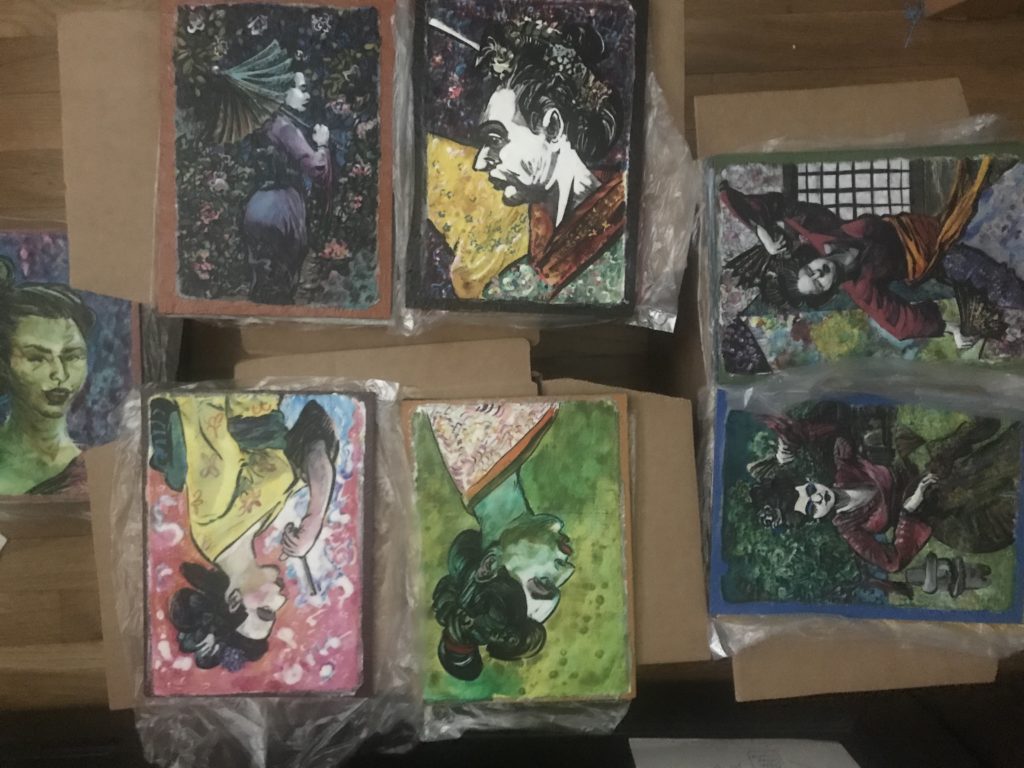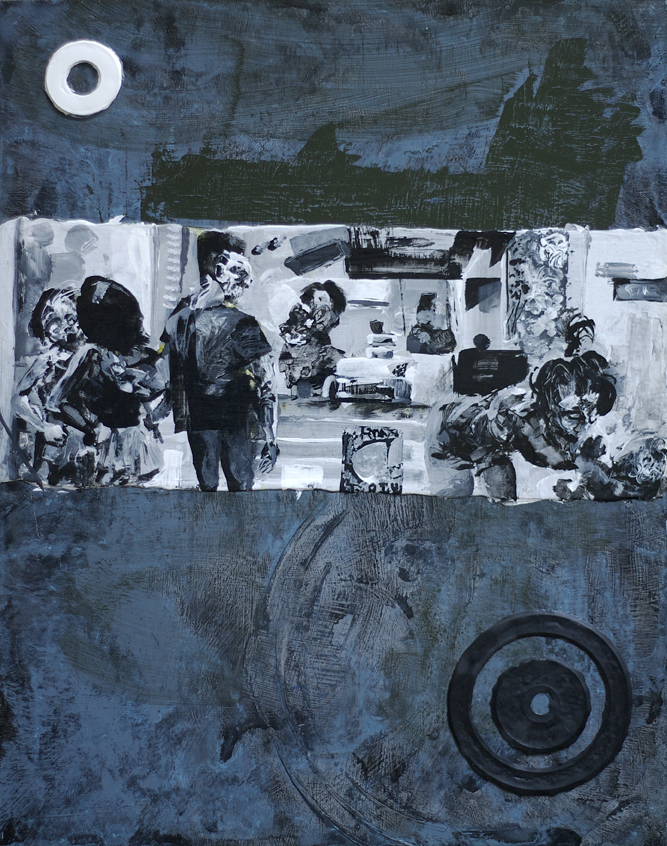36 Stories versus 20 Stories
by Rey ArmenterosMyths make exciting stories. But the Myth of Sisyphus is not one of these. Notwithstanding the useful message, Sisyphus is rather droll, and I guess that’s the point. It has a teaching value. Another myth that is just as boring is the idea that there are only a limited number of stories in the world, and that all the stories come from these few stories. Not just another tiresome idea that has become a cliche, it is menacing the way we think about stories and the value we place in stories. It feels fatalistic, as if the meanings we place on life have always been put on an assembly line. Going up the side of the mountain with this great, big story the size and shape of a boulder only so that it comes down as intended. Do we really believe stories have that type of predictability? If so, wouldn’t they have gone extinct thousands of years ago?
According to certain crowds, the “hero’s journey” by Joseph Campbell properly outlines every story since creation. If everyone believes that the hero’s journey is the only story worth any merit, then anything that falls outside of that model may get lambasted for not following form. This happens all the time when consumers of popular material (movies, TV shows, bestselling novels, and such) admit they can’t understand something and then relegate it as a work that is subpar. Or worse, they group all works that represent the real world as “slice-of-life.”
Joseph Campbell’s hero’s journey brought out the notion that many older cultures followed the same model of telling a myth. His theories raise the idea that there are a number of steps the hero takes along his journey before finally making the right decision and saving his society.
I don’t doubt that there are a great many stories that follow this one model. Just look at Hollywood and how it can’t get past whatever sells, and if the ideas of Joseph Campbell are a hot item with the public at large, Hollywood will base every heroic movie they make on his model.
I ask such people that believe in the omnipresence of the Campbell model if they can fit Proust into that model. Where do you fit Chekhov? Does Hemingway so patly follow this formula for making stories?
I won’t deny it is an interesting idea. Back in the days when I was fascinated by such things, I learned from my first creative writing professor that such an idea even existed — that there were only a limited number of stories ever told in the world. In those ideas, it was fashionable to group conflict into one of three categories: man versus man, man versus nature, and man versus himself. There were others I discovered later like man versus society and man versus machine, but if you were of the disposition of simplifying everything into some core, then you would have to admit that the former sounds like a variation on man versus nature, and the latter of man versus man. And the one known as man versus fate might have been nothing more than a different way of looking at man versus himself. But this was about conflict, which was not the same as plot or “type of story.”
In those creative writing class days, I learned that there was even a writer that had put a book together that catalogued every possible story ever created. He got it down to thirty-something stories.
My initial reaction was to reject this. To my youthful mind, it seemed just so uncreative to follow the same story over and over. But I was curious. I looked up this dusty book in our college library and actually found it! I looked through it, almost checked it out, but I knew I was not going to read it. It was too old, and the writing was thick with a style I couldn’t understand. I let it go.
Years later, I found myself thinking about such things again. I don’t remember what started me on this return to old ideas, but I looked up the thirty-something stories and found the man and his book. I didn’t have to read the book itself since someone had summarized the thirty-six different story plots of Georges Polti on a convenient website.
I don’t think an audience of today would sympathize with Polti’s catalogue of story archetypes. There was a focus on types of stories we just don’t see anymore, such as stories about “erroneous judgment” and “slayer of kin unrecognized.” There were two different plots for self-sacrifice: “self-sacrifice for kin” and “self-sacrifice for an ideal,” and though the two are clearly different, you would think that a book looking for the fundamental components of a story would recognize that the two were the same general idea. There was “rivalry of kin” and “enmity of kin,” and Polti distinguished what made the two different. There was “crime pursued by vengeance” and “vengeance taken for kin upon kin,” and again I realize the the flavor of two such stories would be quite different from each other, but they seem to belong to the same type of story. There was “adultery” and “murderous adultery.”
Polti had taken many of his ideas from classical literature and some of the French literature of his day. To our ears, it sounds like ideas from another era. And even so, it is a product of its times. Polti was only cataloguing what made sense to him at the dawn of the 20th Century. If there is a great difference between enmity of kin and rivalry of kin, it is because the difference might have been more pronounced in his day.
A more recent writer came up with his story types. Ronald Tobias was writing books and producing documentaries, and he came up with his leaner list of possible stories. To me, his choices have the smell of Hollywood behind them. This is a more practical look with only twenty types. On the surface, it seems like he had a few redundant pairs. We get “metamorphosis” and “transformation,” but the first one is an actual magical metamorphosis whereas the second is when someone merely changes. We get “love” and “forbidden love,” and again, we know they are obviously different, but in the end, every love story has its challenges, and one possibility is when that love is forbidden. I suppose they are quite different because one of them demands a tragic ending.
Tobias gives us “ascension” and “descension,” which he agrees are two sides of the same coin. I can see the argument for having the extra story type because it changes the character of the story if the character is ascending into a better a life or going in the other direction. But if we are really boiling it down to the core elements, I would have stuck to the logic of giving just the elements and conflating the two.
I was thinking how Tobias’s more contemporary take on the different stories would surely sound out-of-date at some point in the future. This led me to reflect on how times change and how people create new ways to look at things. It could be that story theorists in the future would find the way we look at story all wrong. And like certain stories in Polti’s book seem to have fallen out of fashion, new stories might rise, coming from who knows where? This goes well with the young man that I was, believing that the possibilities in stories were virtually endless.
After reading about this and spending long hours contemplating the different possibilities, it wasn’t long before I started formulating my own story types. I came up with 26 different ones and explained them in an article I self-published long ago, and now that I am looking at them after all this time has passed, I see that some of them are redundant to me today. In the article, I prefaced it by saying that there might be only two possible stories: someone goes on a trip or a stranger comes to town (as it was described to me in some random website). But I then added that you can break it down further into one story, which is the one where there is a problem that needs to be fixed.
When you bring it down to just one story type (about the main character presented with a problem that needs taking care of), I ask what is the difference of that and attempting to define the word, story? You can look up the definition of story and then agree that it describes every story that you can think of, but does that really encapsulate all the different types of stories? It is nothing but a terse explanation.
I don’t fault Polti or Tobias for constructing their theories of story types.I think they are both commendable projects, and such work makes you consider parallels between stories. It also raises the idea of structure and is a great tool for instruction. If we recognize repetitions in their story models, it is because there must be overlap between these distinctions. And the overlap can invade certain stories, provoking new stories. The story type of sacrifice or loss could be an essential component in a love story. A revenge story could also be a quest.
On the surface, categorizations like this, if made well, always sound correct. They are put together by words, and words signify things. But words are often used to sway and to convince and to manipulate, and that enigmatic quality in any jumbled line of thought is what most makes them fascinating, as the words help picture impressions when telling a tale of loss and redemption clouded with mysteries that we hope to unravel on a journey through any story. Words are used to argue a point, yes, but they are best made for the things that make less rational sense, such as a story, because when we ask how many stories there have ever been, we fail to see that there have been as many types of stories as there have been stories told.



